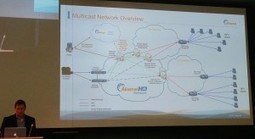This year the EBU BroadThinking Conference was sounding like a holistic swirl, a milestone in the trend of technology to define sets that are greater than the sum of their parts, through creative evolution. « Where Broadcast Meets BroadBand », you get some interesting fusion effect occurring and diluting the traditional boundaries of the screens, with the handheld devices being part of the big screen experience or extending it rather than trying to scalp it, in an environment where all the devices converge towards a restricted set of standards rather than tracing their own line.
While we by default think that standardization kills creativity, events like BroadThinking show that it’s the opposite: if we gather energies to solve common problems together, we can both come up with a more evolved solution and concentrate on what’s important past the pixel grid: the user experience, so consistent across screens that you forget there’s more than one screen involved.



 Your new post is loading...
Your new post is loading...








ajouter votre point de vue ...